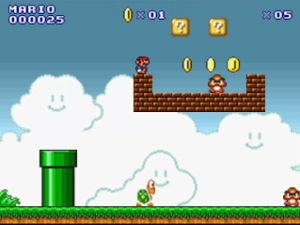Skachatj Mario Na Pk Bez Virusov
Extended version of a paper previously published in Der Merkurstab 1975, p. German title: 'Masem-Sterblichkeit and Therapie', Der Merkurstab 1992; 45:177-80. English by Anna R. Meuss, FIL, MITI. Considered relatively harmless in the temperate zones, measles are a serious problem in tropical countries, where a high percentage of children requiring clinical treatment die of complications, generally secondary infections such as gastroenteritis (in the rainy season) or bronchopneumonia (in the dry season). Inevitably, children in a reduced state of health are particularly at risk, the main causes being malnutrition, anemia and malaria.
 Jan 23, 2018 This feature is not available right now. Please try again later. Published on Jan 23, 2018. Przygody Mario na konsole NES i Famicom - Duration: 11:47. Palar 4,775 views.
Jan 23, 2018 This feature is not available right now. Please try again later. Published on Jan 23, 2018. Przygody Mario na konsole NES i Famicom - Duration: 11:47. Palar 4,775 views.
Children between the ages of 6 to 12 months have been found to be particularly susceptible. During a severe epidemic in 1967-1968, marked differences in mortality at a hospital in Ghana* were found to be due to different methods of treatment. The standard treatment at our hospital included the following: 1 Sedatives, apart from anything else for fear of convulsions, which are more common and severe in the tropics. 2 Antipyretic drugs (salicylates, pyrazolone derivatives) as a general measure to reduce pyrexia; this, too, reduces the risk of convulsions and rapidly improves the general condition. 3 Antitussives, antihistamines or codeine, alone or combined with expectorants. 4 Treatment of manifest or subclinical malaria.


5 Antibiotics as required (for pneumonia, enteritis, etc.) 6 Blood transfusion in case of severe anemia. 7 General measures such as bed rest, fluids, diet. Strangely enough, children whose measles were most severe, with high temperatures (40-41°C persisting for 3-4 days, severe exanthema, subjectively feeling very ill), were found to have the best prognosis. This led us to realize that the symptoms and signs, and especially the pyrexia, signaled activation of defense reactions that would give a successful outcome. Both the exanthema and the expectoration would appear to be effective eliminatory measures on the part of the organism. It could be concluded from this that antipyretics are contraindicated. Antitussives inhibit expectoration and may therefore make bronchopneumonia more likely, particularly if purulent secretions cannot be coughed up.
Febrile convulsions occur mainly while the temperature is rising and are not dangerous in themselves. Malarial convulsions are much more serious; they can be avoided by treating the malaria as soon as the child is admitted, which is the generally accepted method.
To put our thoughts into practice, the treatment scheme was changed as follows: 1.-3.: Sedatives, antipyretics, antiphlogistics and antitussives were omitted altogether. Expectorants were given on a routine basis. 4.-7.: were given as indicated. The method of treatment was changed when the measles epidemic was exactly half-way towards reaching its peak (mid-November 1967 – early March 1968).
The first-mentioned regimen was used until the beginning of January 1967, and the revised regimen after this. In either case the number of patients was 56. The result- 20 of the 56 children in the first group (given sedatives, antipyretics and antitussives), i.e.
Four of the 56 children in the second group (not given those drugs but malaria therapy, antibiotics, blood transfusions and general measures as indicated), i.e. 7%, died, one of encephalitis, one of rupture of the trachea. The difference was significant at P.